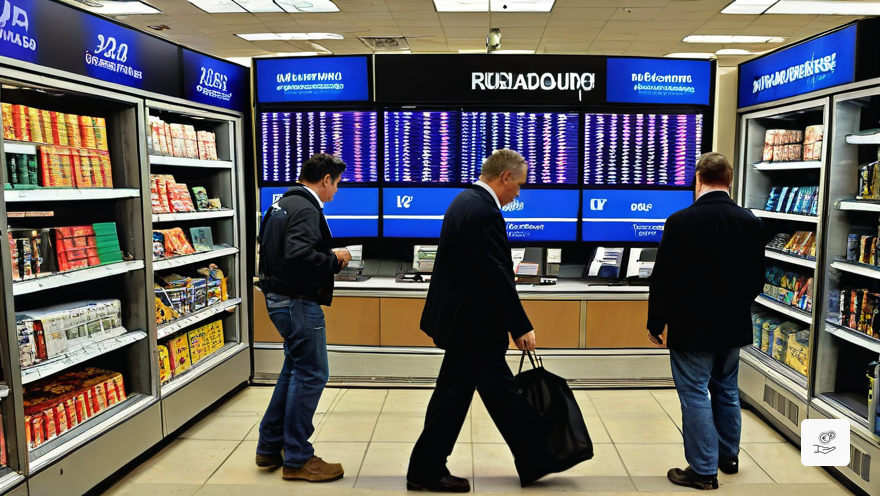Unexpected Downturn in US Retail Sales Sends Ripples Through Markets

Retail Sales Plunge Surprises Analysts
In a surprising turn of events, US retail sales took an unexpected dip of 0.8% in January, catching analysts off guard. This sudden decline signals a slump in consumer spending, a key indicator of economic health.
Implications for Economic Growth
Consumer spending is the backbone of economic growth, and when it wanes, it suggests weakening demand. Such a scenario aligns with the Federal Reserve’s agenda of considering interest rate cuts to stimulate economic activity.
Market Response and Rate-Cut Speculations
Following the retail sales shocker, interest futures climbed on Thursday, reflecting renewed expectations of rate cuts. Conversely, Treasury yields took a downward trajectory. This contrasts with earlier upbeat inflation reports.
The surprising retail sales downturn provided relief to investors who had been disheartened by inflation figures, which had dashed hopes of imminent rate cuts. This shift in sentiment now points towards a potential rate cut as early as May, with market odds increasing to 40%.
Record High Foreign Holdings
Amidst these developments, it’s worth noting that foreign holdings of US Treasury securities reached a new peak in December. This occurred amidst expectations of imminent rate cuts, as policymakers took on a more dovish stance.
Labor Market Resilience and Rate Expectations
Despite the dip in initial jobless claims reported by the Labor Department, there was minimal market reaction. The robustness of the labor market has been a factor in the recent dampening of rate-cut speculations, providing some resistance against immediate rate adjustments.
The changing dynamics in interest rate expectations reflect a broader narrative shift in 2024, with June now being eyed for the first potential rate cut. However, the trajectory of rate adjustments will ultimately be determined by inflation trends and economic performance.




